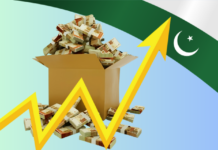An automobile is supposed to be a depreciating asset. An asset which is used and over time its value depreciates as wear and tear takes hold, and new technology results in better, and safer cars. In Pakistan, it is the complete opposite. A protectionist regime which has protected the incumbents for almost three decades now continues to manufacture cars which are not just expensive relative to other regional markets in US$ terms, but also of substandard quality, often skimping on technological advances available in similar models in other regional, and global markets.
In presence of a protectionist regime, competition from imported automobiles is discouraged through an excessive duties regime. In absence of competition from imported automobiles, local manufacturers do not have the incentive to improve their product offering resulting in a welfare loss for consumers, as they continue to pay a higher price for substandard automobiles, relative to the choice set available in other markets.
Through an extended protectionist regime, and absence of any external competition, local manufacturers increase prices every few weeks, often pegging the prices with parity of PKR against major currencies. Any depreciation in PKR results in increase of prices locally by a proportionate, or higher increase in prices. Furthermore, as demand often outstrips local supply, there is an extended wait time for delivery of automobiles, often stretching from six months to even one year in many cases. In-effect, an automobile buyer will have to pay a certain percentage of the price in advance for booking, following with full payment. Furthermore, any price increases during this period are also borne by the customer. Such an erratic pricing and payment regime as well as waiting times extended to twelve months or more, automobiles have essentially become financial assets.
Many individuals even use automobiles as an asset class, given its strong correlation with value of PKR against major currencies. A depreciating PKR eventually results in an increase in price of automobiles. More importantly due to a long wait time, there exists a substantial premium for delivery of vehicles on spot. A premium of 10 to 15 percent is fairly common on various models, if someone wants the automobile on spot, or with a much shorter waiting. Such market distortions have resulted in emergence of a class of investors who act as market makers, and pocket a sweet low-risk financial spread on automobiles bought and sold. Creation of a shadow financial market has also been made possible due to increasing prevalence of cash in the economy, with most transactions being done outside the financial system, devoid of any potential capital gains taxes, or even income taxes. A market distortion eventually having a ripple effect across the economy, from welfare loss to consumers, to creation of a shadow market.
There must be some kind of way out of here, said the joker to the thief. Jimi Hendrix uttered these words in his seminal work, all along the watchtower. The way out of a protectionism regime is creation of a vibrant, and more open market. Reducing duties on imports is one way to enable more competition, but an unintended consequence of increased automobile imports can be a deteriorating current account deficit situation given precarious state of our foreign exchange reserves. However, any such incremental imports must be compared with imports of Completely Knocked Down (CKD) units, and other components.
It is estimated that roughly 60 to 70 percent of components of an automobile sold in Pakistan are imported. In essence, we are importing a significant quantum of components regardless. Restricting imports further disincentivizes local automobile manufacturers to increase local production of components and reduce the import component. Increasing competition through reduction in duties and sticking with the policy rather than succumbing to pressure of the automobile lobby may actually benefit consumers in the long-run. A tiered taxation structure where a lower tax is applied on automobiles with higher proportion of local components, thereby making the automobiles relatively more affordable can also be a policy action to steer the industry towards a more competitive market regime.
Policy actions need to focus on enhancing consumer welfare, rather than safeguarding producer surplus. A protectionist regime rarely enhances consumer welfare and often results in creation of a market structure which even stunts growth of an industry when a global marketplace is considered. Automobile industry is a classic example of the same where adverse incentives has created more problems than it has solved. A gradual opening up of competition in the industry and ensuring policy continuity for the same would enable availability of better and affordable products for the local consumer. In essence protection of infant industries shouldn’t be till perpetuity, the infant has got to grow someday.























Very thorough critical analyses of Auto Industry of Pakistan which almost became a corporate mafia, however many people highlighted the same but their voice falls on def ears in govt. I think Japanese big 3 are the sole responsible of the current misery of the Auto Industry (for consumers). The big three never let the new entrants settle obviously with the help of Lawmakers. its been more then 60 years but yet they are assembling the vehicles in Pakistan with all the components imported, this is utter failure on our part because companies just want to make money and the govt should ensure to protect the consumers interest. Now a days cars are getting out of reach from the middle class.